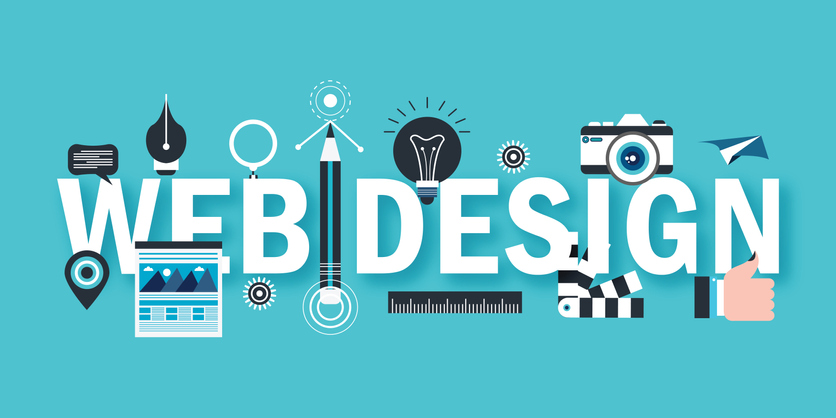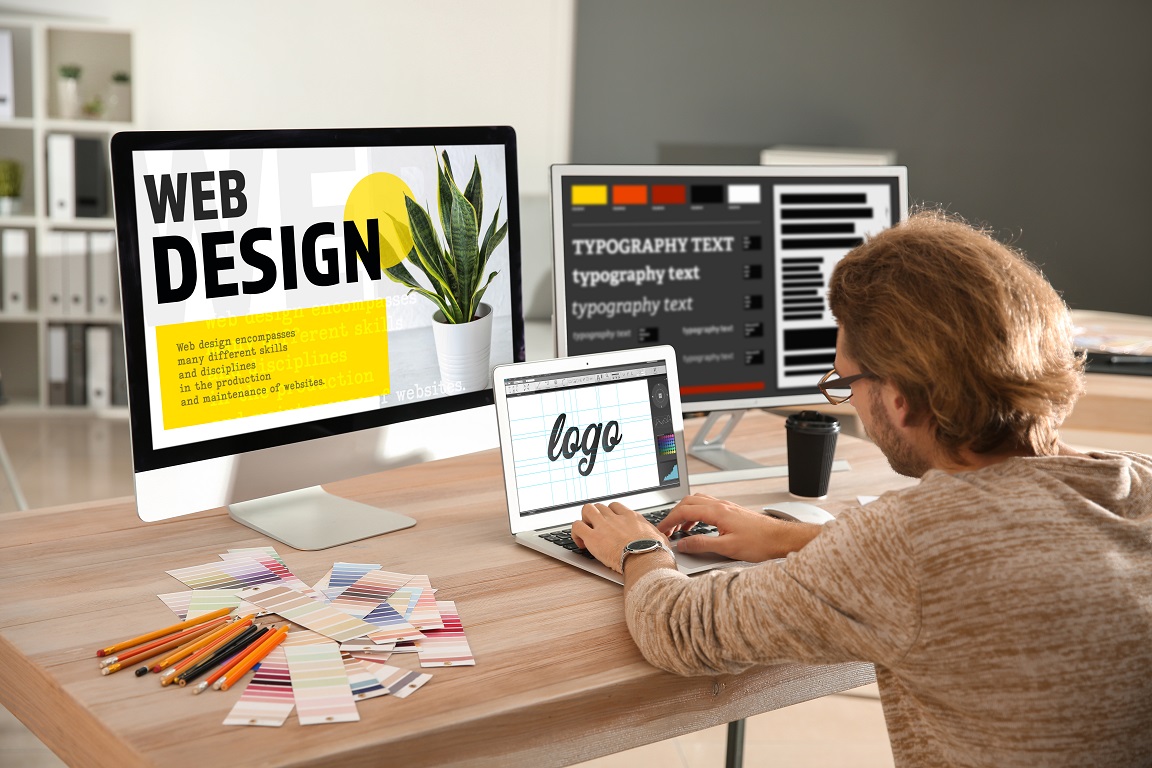Key Trends in Modern Website Design That Every Programmer Should Know
In the quickly advancing landscape of website design, several crucial fads have actually emerged that are necessary for programmers to realize in order to stay affordable. A minimalistic design strategy is gaining grip, stressing simplicity while enhancing customer experience with rapid tons times and access. Mobile-first methods and the current combination of dark mode choices are reshaping how customers communicate with electronic material. As these patterns proceed to develop, recognizing their implications will certainly prove crucial for effective design. What exists ahead in this vibrant area might redefine the requirements of user interaction and functionality.

Minimalistic Design Technique
The minimalistic layout method has actually arised as a specifying pattern in modern-day web style, defined by its focus on simpleness and performance. This style approach supporters for the decrease of aspects to their crucial kinds, permitting for a cleaner and a lot more user-friendly individual experience - Web design in Penang. By getting rid of unnecessary diversions, minimalism helps with more clear interaction of web content, making certain that customers can browse web sites easily
Among the key advantages of minimalistic style is its ability to enhance lots times and overall website efficiency. Fewer graphical elements and structured coding lead to quicker web page screens, which is vital in maintaining visitor interaction. Furthermore, this strategy fosters a sense of sophistication and professionalism, often lining up with brand name values that focus on clearness and effectiveness.
Furthermore, minimalistic layout is inherently adaptable throughout various tools and screen dimensions, guaranteeing uniformity in individual experience. The focus on typography and whitespace produces a visually attractive layout that guides individuals in the direction of vital activities, such as phone call to activity or crucial info.
Focus on Availability
Recognizing the diverse needs of individuals, contemporary web style significantly emphasizes accessibility as a fundamental concept. This shift is driven by the understanding that websites must be usable by people with varying abilities, consisting of those with visual, auditory, electric motor, and cognitive impairments. Making sure access not only lines up with ethical factors to consider but likewise expands the potential target market for internet content.
Trick practices in improving accessibility include using semantic HTML, which provides meaningful context to assistive innovations, and the implementation of ARIA (Available Rich Web Applications) functions to improve navigation for individuals reliant on display viewers. Color comparison, message size, and responsive style aspects additionally play considerable duties in making material extra accessible.
In addition, incorporating keyboard navigating alternatives permits users with wheelchair problems to connect with internet user interfaces flawlessly. Normal ease of access audits and user testing with individuals with disabilities can further improve design selections and recognize possible obstacles.
Eventually, prioritizing availability not just satisfies legal requirements yet also cultivates a comprehensive electronic setting, improving the general customer experience while strengthening the brand's commitment to social duty.
Mobile-First Approaches
As ease of access ends up being a foundational facet of website design, the focus on mobile-first approaches has actually obtained prominence. This strategy focuses on the mobile user experience, guaranteeing that web sites are developed for smaller sized screens and touch communications prior to adjusting to bigger displays. Offered the considerable rise in mobile phone usage for searching, implementing mobile-first methods is vital for reaching a wider audience properly.
Mobile-first design urges developers to develop streamlined, reliable designs that pack promptly and function flawlessly on mobile phones. This entails concentrating on vital features and web content, reducing unneeded components that can diminish user experience. By embracing a mobile-first frame of mind, programmers can enhance website efficiency, as many style concepts and optimizations for mobile devices equate well to desktop computer atmospheres.
In addition, internet search engine increasingly favor mobile-optimized sites in their ranking algorithms, making mobile-first design not just an ideal method but also a vital factor for online search view website engine presence - Web design in Penang. By embracing this strategy, developers can develop inclusive, easy to use internet sites that accommodate diverse audiences, eventually bring about greater involvement and complete satisfaction across all systems. In a digital landscape where mobile usage remains to surge, prioritizing mobile-first design is both a tactical and needed strategy
Dark Setting Assimilation
Several customers appreciate the choice of dark setting in modern-day internet layout, as it not just boosts aesthetic allure however likewise improves readability in low-light atmospheres. This layout fad has actually gotten traction, driven mainly by user demand and the increasing awareness of eye strain related to long check my site term exposure to brilliant screens.
Dark setting combination allows designers to produce aesthetically striking interfaces while maintaining functionality. By employing a darker color palette, developers can minimize glow and reduce exhaustion, which is specifically useful for customers that spend expanded periods on their tools. Dark mode can expand battery life on OLED screens, an included benefit for mobile individuals.
When implementing dark setting, designers need to guarantee that shade contrasts are optimized to keep legibility. Crucial element such as text, symbols, and interactive parts should be clearly distinct against darker backgrounds. It is additionally necessary to supply users with the ability to toggle in between light and dark settings flawlessly, accommodating private choices and environmental contexts.

Dynamic Web Content Experiences
In the realm of modern web layout, vibrant web content experiences have actually emerged as a transformative method that enhances customer interaction and communication. By leveraging real-time data and find more info customer behavior, web sites can supply tailored material tailored to specific preferences and needs (Web design in Penang). This adaptability not just boosts individual complete satisfaction but also drives higher conversion rates
Dynamic web content can take different kinds, such as tailored item recommendations, location-based details, and contextually appropriate articles. Technologies like AJAX and server-side scripting enable seamless updates without calling for a full web page reload, ensuring a smoother customer experience. Moreover, the combination of synthetic intelligence and artificial intelligence even more improves these experiences by evaluating customer communications and adjusting content appropriately.
The execution of dynamic content experiences additionally presents chances for A/B testing and performance optimization. By continually analyzing individual information, designers can make informed changes to make best use of engagement and retention. As individuals significantly expect customized experiences, welcoming dynamic content will be critical for developers aiming to create websites that reverberate with their target market. In summary, dynamic web content experiences stand for a substantial trend in contemporary website design, forming the future of electronic communication and customer contentment.

Final Thought
In final thought, the landscape of contemporary website design is shaped by numerous crucial fads that enhance individual experience and interaction. A minimalistic style approach focuses on capability, while availability makes certain that diverse customer needs are fulfilled. Mobile-first methods and dark setting assimilation cater to varying tool uses and atmospheres. Dynamic material experiences driven by real-time data create individualized communications that substantially boost engagement and conversions. Adherence to these fads is important for reliable website design in today's digital atmosphere.